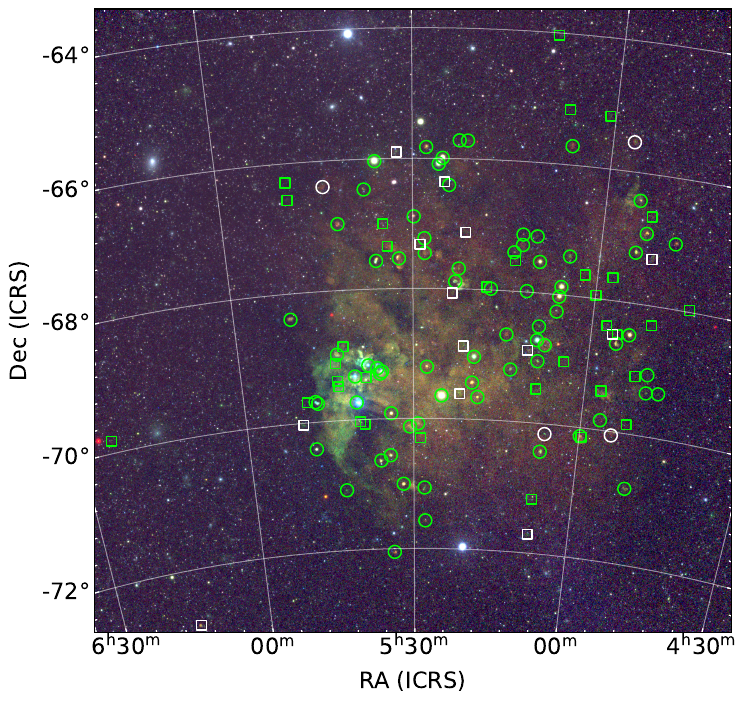Astronomers from the Remeis Observatory Bamberg have published the most detailed X-ray map of exploded stars in our neighbor galaxy to date.
The work led by Federico Zangrandi, PhD student in the multiwavelength group led by Prof. Manami Sasaki, used data by the SRG/eROSITA telescope. This telescope, co-developed by the Remeis Observatory and launched in 2019, has mapped X-ray emission from energetic sources in the entire sky over 2.5 years.
The Large Magellanic Cloud (LMC) is a lighter and more active cosmic neighbor of the Milky Way, being at a distance around 150 000 light years, and currently undergoing intense star formation. This makes the LMC an ideal galaxy to study the whole population of supernova remnants, the leftovers of stars which died violent explosive deaths hundreds to thousands of years ago. In their work, the team of international researchers based in Bamberg and across the globe have analyzed the X-ray emission from the LMC. In particular, they searched for radiation produced by gas heated by the shock wave released by such stellar explosions. Complementarily to the analysis of X-rays, which trace the million-degree hot debris of the explosion, they included data from optical and radio wavelengths, which reveal colder gas and energetic electrons in the shell shaped by the shockwave.

X-ray image of the LMC. Red, green, and blue colors map soft, intermediate, and hard photon energies, respectively. The circles indicate confirmed supernova remnants, while the squares mark candidates for stellar explosions. Green markers indicate previously known objects, while white markers indicate newly discovered sources. In the lower left corner, the object in the LMC outskirts is visible.
Thereby, they constructed the most complete and up-to-date catalog of supernova remnants in the LMC, confirming several previous candidates, and identifying numerous new potential sites of stellar explosions. Intriguingly, they identified one particularly puzzling new supernova remnant, located in the outskirts of the LMC, far from where one typically observes supernovae, begging the question of how its progenitor star might have strayed so far from its host galaxy.
In future work, Zangrandi et al. will continue investigating the X-ray properties of the stellar graveyard in the LMC as a whole, as well as the properties of peculiar individual objects such as this runaway supernova remnant.
Read more: First study of the supernova remnant population in the Large Magellanic Cloud with eROSITA
Zangrandi, F., Jurk, K., Sasaki, M., et al. 2024, A&A, 692, A237
Federico Zangrandi
federico.zangrandi@fau.de
+49 9131 85-81029
Manami Sasaki
Manami.Sasaki@fau.de
+49 9131 85-81019





